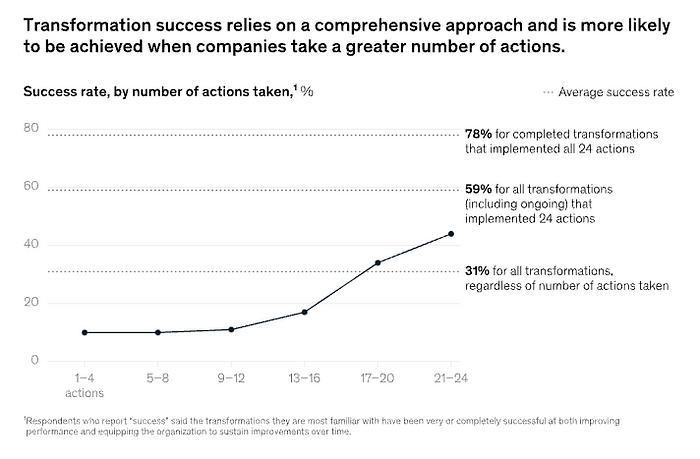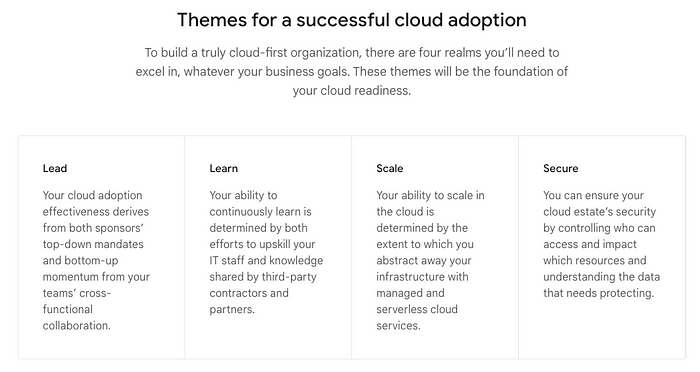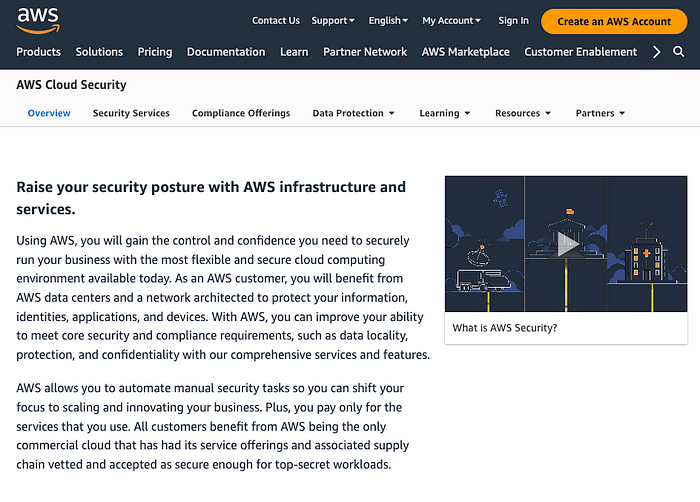The Practical Guide to Multi-Cloud Adoption: Navigating Challenges and Opportunities
Master multi-cloud strategy: Boost flexibility, navigate challenges, streamline operations, and enhance security for optimal business performance

In the rapidly evolving world of cloud computing, multi-cloud strategies have become paramount to achieving optimal business performance. As organisations grapple with the complexities of navigating multiple cloud providers, it’s fundamental to engage in strategic discussions as early as possible — a given, but the focus areas are usually vast, blurring and complexities, priorities overlapping.
It’s a real challenge, it always is, and I hope to unpack the common threads, themes and approaches to help visualise the Big Picture. We can avoid boiling the ocean on day 1, and figure out together what strategic elements to start with, on such a project.
This blog post delves into the relatively-common, yet critical aspects of implementing a successful multi-cloud initiative, ensuring that organisations can fully reap the benefits of cloud technology.
I find myself in a unique position, having hands-on delivered and now lead the efforts Building out both effective Landing Zones (re-usable, consumable cloud tech solution templates) from the TECHNOLOGY perspective and the PROCESSES in terms of governance, structures that need to be put in place to ensure the PEOPLE are empowered and enabled to consume such digital artefacts.
I hope to add my personal perspective and offer enough insights yet keep this lighthearted read. There are plenty books Management, Leadership and Technology i’m sure you could read — anything I could recommend of relevance will be linked to.
We will explore the pivotal considerations for approaching multi-cloud discussions within organisations, the importance of platforms and control planes, and how operating models impact adoption. Additionally, we will compare the offerings of the top three cloud service providers and identify potential pitfalls to avoid. By addressing these critical themes, this blog post aims to empower Senior technical leadership and CxO alike with the insights necessary to make informed decisions about their multi-cloud strategies and drive their organisations towards greater success.
What does Multi-Cloud Look Like? — A Billion Dollar Question, Anon.
A growing number of organisations are embracing multi-cloud strategies for various reasons. However, the approach adopted by many has often been inadequate, leading to risk and compliance gaps, uncontrolled cloud spending(no FinOps), and a suboptimal developer (DevEx) experience.
The advantages of a successfully multi-cloud enablement, on the other hand, may feature;
- Enhanced flexibility to select the most suitable services for each stage of an application lifecycle or specific business need.
- Streamlined migration between public and private clouds, as well as among multiple providers.
- The ability to address changing business requirements in a more agile and cost-effective manner through a multi-cloud approach.
What is Multi-Cloud
Multi-cloud, when executed correctly, is a strategic approach that enables organisations to harness the unique strengths of multiple cloud providers to deliver optimal business value. It is about making informed choices and leveraging the best services and capabilities from each provider based on the specific needs of development and engineering teams. The focus should be on understanding the bounded context of applications and teams and determining how these can be best enabled, developed, and deployed on the cloud. A successful multi-cloud strategy is supported by a comprehensive governance methodology that manages all cloud providers holistically without compromising the developer experience or the potential business benefits.
On the other hand, multi-cloud is NOT about spanning applications across multiple cloud providers, using one provider as the primary and the second one as a backup or disaster recovery provider, or creating an abstraction layer across multiple providers while only using common services. Additionally, it should not involve standardising a single approach across all clouds by moving towards a homogenous architecture. Misconceptions around multi-cloud, such as the industry-created term “Poly Cloud,” suggest running specific parts of an application, workload, or service on another cloud provider. However, this approach leads to increased engineering complexity and costs, which is contrary to the intended benefits of multi-cloud.
In my view, multi-cloud should focus on extracting the most value from each cloud provider to support the organisation’s unique needs and requirements. It is essential to avoid misconceptions that dilute the benefits of a multi-cloud approach and instead concentrate on enabling the best possible developer experience, business value, and overall cloud governance. By understanding what multi-cloud is and what it is not, organisations can set a strong foundation for the successful implementation of their multi-cloud strategy.
View on Strategic Multi Cloud Adoption
According to a 2020 survey by McKinsey, only 14% of organisations reported that their digital transformation efforts had made and sustained performance improvements, while a staggering 70% of digital transformation initiatives fell short of their objectives, often due to a lack of alignment between leadership, engineering practices, and agile methodologies. These statistics underscore the importance of establishing a cohesive approach to adopt and execute a multi-cloud strategy for long-term success.

Organisations need to establish a solid foundation in cloud adoption by committing to a single cloud provider and investing heavily in their internal capabilities, to drive effective change and a sustainable adoption first. This makes adoption success, a digital transformation — if you like — sticky.
This approach allows organisations to develop a robust cloud engineering discipline and an operating model that leverages modern practices, ultimately driving improvements in customer experience, cost efficiency, and speed to market.
The Main takeaways — Building Internal (single) Cloud Maturity
- Developing a strong in-house cloud engineering discipline - Organisations should focus on building internal expertise in running modern platforms and cloud-native services, incorporating techniques such as Site Reliability Engineering (SRE) and Chaos Engineering (Chaos Monkey ref). |Battle Test and Learn to Crawl|, technically speaking that is. Weave Cloud Adoption Frameworks (CAF) early into such Engineering Practices, alongside SRE to ensure fully adapted-to-fit model of operation. More on that Later.
- Adopting a modern organisational operating model - Organisations should transition from traditional project-based structures to product teams, adopting agile ways of working and product development methodologies (IMHO Just anything but waterfall SAFe). A focus on democratising cloud adoption within the organisation can foster innovation and agility.
- Optimise Developer Experience — DevEx, Reimagining software, product, and digital experience development: By embracing a cloud-first mindset, organisations can better connect and serve both internal (employees) and external (customers) stakeholders, driving increased value and satisfaction. My colleague Fernando Villalba has written a great post(s) to unpack that
- Redesigning Cloud Operations - Organisations should need to embrace DevOps and SRE practices to create more efficient and resilient operations. Implementing FinOps can help manage and control cloud costs, leading to greater financial agility.
- Overhauling Security Operations - Adopting a zero-trust architecture where possible and leveraging threat modelling enables organisations to proactively assess and defend against threats in a systematic manner. Shifting from paper-based controls and risk management exercises to real-time, programmatic approaches can result in a more secure and agile environment.
In Short, by concentrating on a single cloud provider and building internal cloud maturity, your organisations could significantly improve their customer experience and satisfaction, reduce operational costs, and accelerate time-to-market, among other business benefits. This particular strategic adoption approach to cloud adoption prepares organisations for future growth and digital transformation.
Common Pitfalls to Avoid
As you suspected, when you set sail on the exciting journey of multi-cloud adoption, remember that smooth sailing is not always guaranteed. And navigating the seas of multiple cloud vendors can be tricky, when each Cloud Vendor is offering their own unique blend of services, pricing, and even challenges. Like, thanks for making this more fun.
To ensure a smooth transition and avoid common pitfalls, lets explore understand the key aspects of multi-cloud adoption, such as the unique offerings of each cloud vendor, data security and compliance, customer support and SLAs, and the development of a comprehensive multi-cloud strategy.
The following is a short list of topical areas to be mindful of when articulating and cross referencing the multi-cloud strategy for your team;
- Understand Each Vendor’s Unique Offerings(Failing to), — A very common pitfall in multi-cloud initiatives is the assumption that all cloud vendors are created equal. In reality, each of the big three — AWS, Azure, and GCP — offers distinct services, pricing models, and architectural approaches within their respective Cloud Adoption Frameworks (CAF) . To make an informed decision, it is essential to identify the specific workloads your organisation intends to run in the cloud. This will enable you to evaluate and compare each vendor’s offerings more effectively, ensuring the best fit for your unique requirements.

- Overlooking Data Security and Compliance, — Another critical aspect to consider during a multi-cloud initiative is the data security measures each vendor has in place. AWS, Azure, and GCP all provide robust security features, but it is vital to examine the specifics of their data breach handling, incident response, and compliance capabilities [4][5][6]. Thoroughly understanding each vendor’s security offerings will help you choose a provider that best aligns with your organization’s data security and compliance needs.

- Neglecting Customer Support and Service Level Agreements (SLAs), — Evaluating a cloud vendor’s customer support and SLA policies is crucial for a successful multi-cloud initiative. AWS, Azure, and GCP each have their own support offerings and SLA commitments. Those do change time to time — so will leave this for you to confirm. This will ensure that you have a clear understanding of the level of service you can expect from each provider.
- Lack of a Comprehensive Multi-Cloud Strategy, — As per no-surprise, — the absence of a comprehensive multi-cloud strategy can lead to fragmented and inefficient cloud adoption.
A well-designed multi-cloud strategy should consider workload placement, platform standardisation, and centralised management across the different cloud providers, — More on that later.
This means you will need to evaluate each Cloud Vendor, for the designated use-case — leveraging the best practices from each AWS, Azure, and GCP’s CAFs and architectures, you can create a unified approach to multi-cloud adoption that delivers optimal results for your organisation. (Azure has a handy page on this here)
Change is Hard. Multi-Cloud Rollout is Hardest. But a Path Forward
Embracing a holistic approach to cloud adoption is vital for organisations seeking to leverage the best features from multiple cloud service providers (CSPs) such as Azure, AWS, and GCP. By adopting a unified cloud adoption framework that amalgamates best practices from all major CSPs, organisations can create a simplified, result-oriented strategy that addresses specific business challenges while maintaining security and compliance (OpModel Template). This comprehensive framework enables organisations to navigate the complexities of multi-cloud adoption more effectively, and ultimately, achieve their desired business outcomes.
Adapting Cloud Operations (CloudOps) to accommodate multiple CSPs is an essential aspect of optimising the cloud operating model. This adaptation process involves the implementation of a mature and well-documented Cloud Controls Framework (CCF) that encompasses all key risk control objectives to be implemented across any CSP. Organizations can leverage the Cloud Controls Matrix (CCM) from the Cloud Security Alliance (CSA) as a starting point and build upon it with industry-specific control objectives. This process should also include enhancing the FinOps framework to cater to multiple providers and adopting a multi-modal operating model that accommodates various internal team skill levels and expertise in cloud development.
Building a dedicated Cloud Platform Engineering team is another crucial step in ensuring the successful adoption of a multi-cloud strategy. This team should operate as a platform team, treating internal development teams as customers and providing core platform capabilities, such as Cloud Landing Zones and Shared Services. By leveraging Site Reliability Engineering (SRE) principles, the platform engineering team can enhance developer experience and focus on key metrics like functionality, stability, ease of use, and thus — clarity.

Lastly, creating a clear workload placement strategy is essential for preventing confusion and ensuring that development teams understand the implications of choosing one cloud provider over another. Aligning the workload placement strategy with the main drivers for multi-cloud adoption, such as legal and regulatory compliance or risk management, allows organisations to make informed decisions and maintain consistency across platforms.
This strategy should also be integrated into the organisations demand management process, ensuring a comprehensive understanding of the implications associated with choosing one CSP over another.
There are Many Clouds in the Sky.
I hope you’ve enjoyed the insights of this multi-cloud adoption journey and operating models, learning about the importance of embracing holistic frameworks, fine-tuning operations, and nurturing a proficient Cloud Platform Engineering team.
From the outset, it’s a tale of having the relevant business, legal and compliance drivers to push such Multi-Cloud initiative. Financial Service for example may be such very example — leveraging multi-cloud vendor aspect to remain regional-sovereignty purposes yet de-risking cloud vendor downtime.
All but to a point. Such operation resilience may be desired, but always challenging to implement and adopt in practice.
The other point to takeaway is that A Single Cloud vendor adoption — effectively enough to see a consistent metric uptick to earn that Elite DevOps performer according DORA — appears to be challenging as is. (albeit the trend is improving and growing) IMHO, It’s a case of achieving the relative operational stability, consistent engineering standards — \w community of excellence on a single cloud vendor first is more desired. It would be my default recommendation and priority, before bringing in the second (and the third?) in pursuit of high ambitions such Operation Resilience by notion of “We’re Multi-Cloud. We must be doing well then”.
Let me know what you think. What’s your perspective and experience on Multi-Cloud initiatives, adoption and delivery efforts?
For those passionate about mastering the art of multi-cloud success, I encourage you to dive deeper and Keep Learning.
If you happen to be in London, why not reach out for a coffee, and stay connected on LinkedIn and keep the conversation going. J

